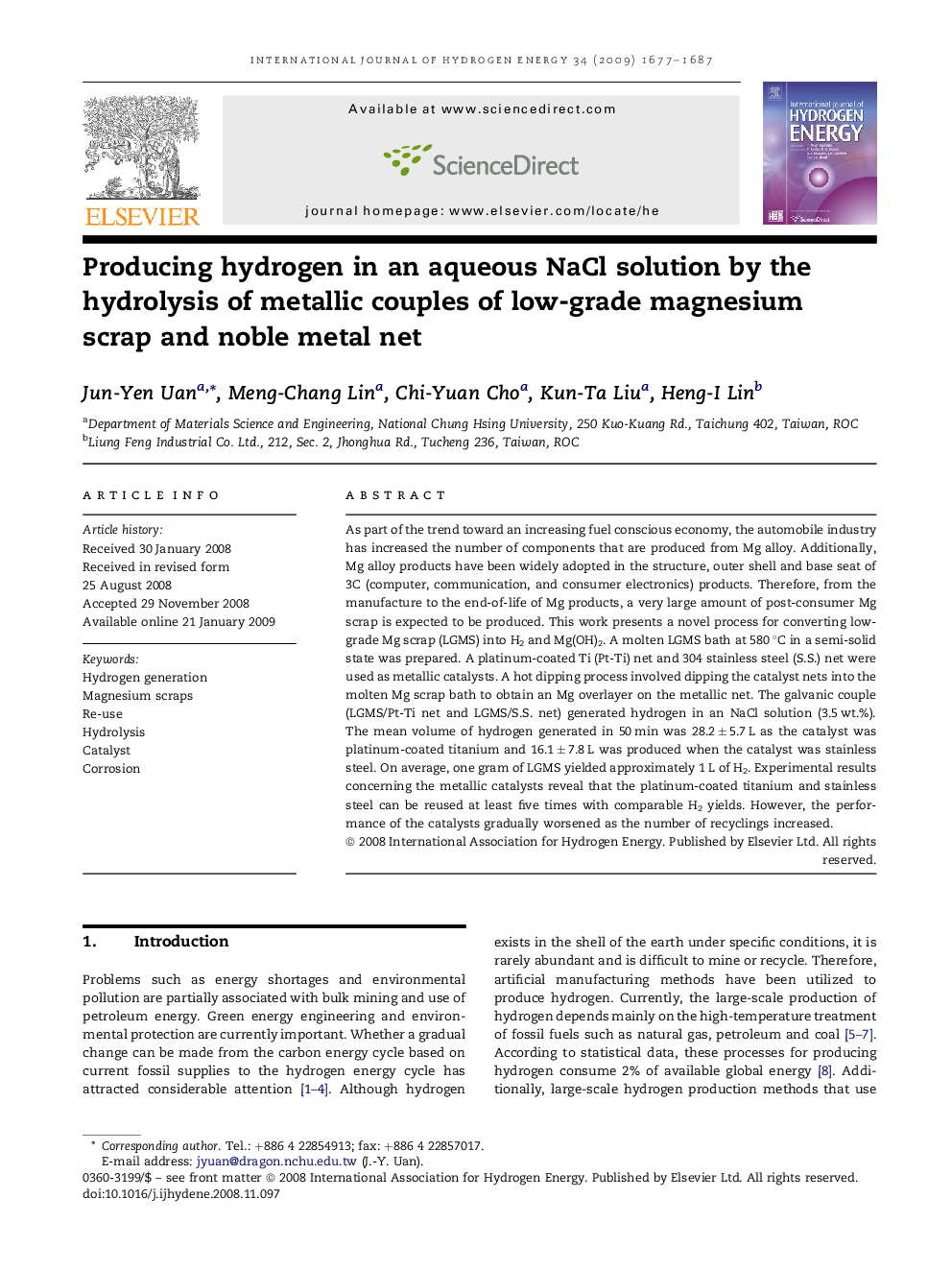| Article ID | Journal | Published Year | Pages | File Type |
|---|---|---|---|---|
| 1274287 | International Journal of Hydrogen Energy | 2009 | 11 Pages |
As part of the trend toward an increasing fuel conscious economy, the automobile industry has increased the number of components that are produced from Mg alloy. Additionally, Mg alloy products have been widely adopted in the structure, outer shell and base seat of 3C (computer, communication, and consumer electronics) products. Therefore, from the manufacture to the end-of-life of Mg products, a very large amount of post-consumer Mg scrap is expected to be produced. This work presents a novel process for converting low-grade Mg scrap (LGMS) into H2 and Mg(OH)2. A molten LGMS bath at 580 °C in a semi-solid state was prepared. A platinum-coated Ti (Pt-Ti) net and 304 stainless steel (S.S.) net were used as metallic catalysts. A hot dipping process involved dipping the catalyst nets into the molten Mg scrap bath to obtain an Mg overlayer on the metallic net. The galvanic couple (LGMS/Pt-Ti net and LGMS/S.S. net) generated hydrogen in an NaCl solution (3.5 wt.%). The mean volume of hydrogen generated in 50 min was 28.2 ± 5.7 L as the catalyst was platinum-coated titanium and 16.1 ± 7.8 L was produced when the catalyst was stainless steel. On average, one gram of LGMS yielded approximately 1 L of H2. Experimental results concerning the metallic catalysts reveal that the platinum-coated titanium and stainless steel can be reused at least five times with comparable H2 yields. However, the performance of the catalysts gradually worsened as the number of recyclings increased.
